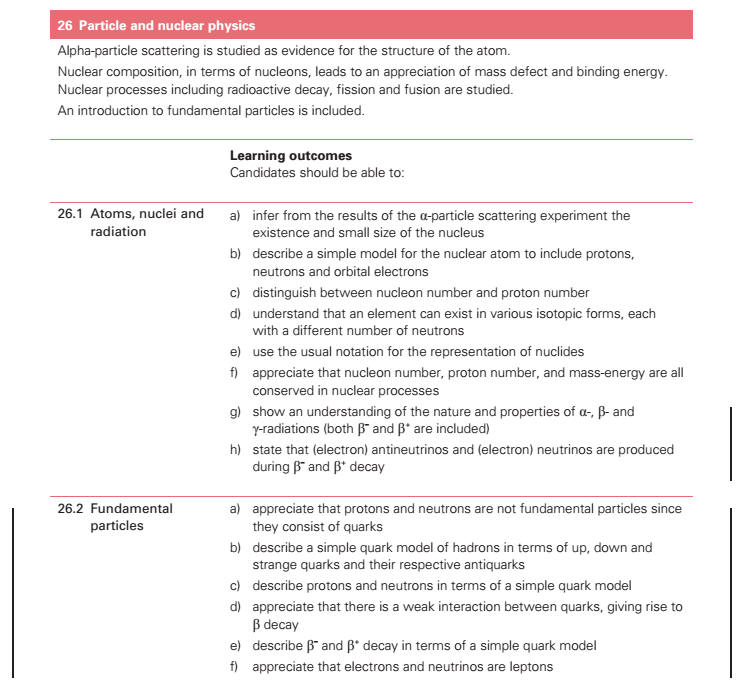26.1 Atoms, nuclei and radiation
a) infer from the results of the alpha scattering[] experiment the existence
and small size of the nucleus
b) describe a simple model for the nuclear atom to include protons, neutrons
and orbital electrons
c) distinguish between nucleon number and proton number
d) understand that an element can exist in various isotopic forms, each with a
different number of neutrons
e) use the usual notation for the representation of nuclides
f) appreciate that nucleon number, proton number, and mass-energy are all
conserved in nuclear processes
g) show an understanding of the nature and properties of α-, β- and
γ-radiations (both β – and β + are included)
h) state that (electron) antineutrinos and (electron) neutrinos are produced
during β – and β + decay
26.2 Fundamental particles
a) appreciate that protons and neutrons are not fundamental particles since they consist of quarksb) describe a simple quark model of hadrons in terms of up, down and strange quarks and their respective antiquarks
c) describe protons and neutrons in terms of a simple quark model
d) appreciate that there is a weak interaction between quarks, giving rise to beta decay
e) describe β – and β + decay in terms of a simple quark model
f) appreciate that electrons and neutrinos are leptons
